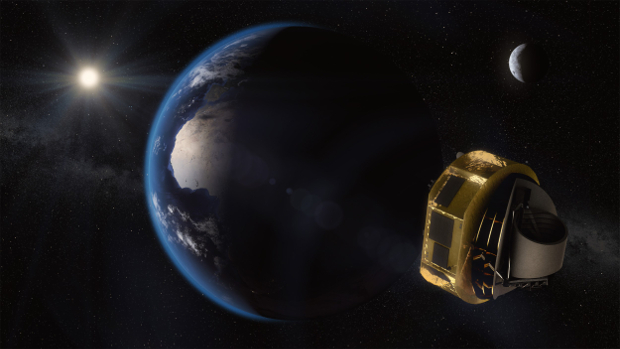A mission to answer fundamental questions about how planetary systems form and evolve has been selected by the European Space Agency (ESA) as its next medium-class science mission, due for launch in 2026.
During a four-year mission, Ariel will observe 1,000 planets orbiting distant stars and make the first large-scale survey of the chemistry of exoplanet atmospheres.
The mission has been developed by a consortium from 15 ESA member states including Ireland, UK, France, Italy, Poland, Spain, the Netherlands, Belgium, Austria, Denmark, Ireland, Hungary, Sweden, Czech Republic, Germany, Portugal, with an additional contribution from NASA. Prof Tom Ray of Dublin Institute for Advanced Studies (DIAS) is co-principal Investigator.
University College London (UCL) is the primary lead for the mission and DIAS is providing both hardware and manpower. Irish funding for Ariel will come from ESA’s PRODEX programme that is supported by the Government of Ireland and managed by Enterprise Ireland.
Prof Ray said: “It is wonderful news that ESA have selected Ariel. At this stage we have discovered almost 4,000 planets around nearby stars but very little is known about them beyond their size and how far they are from their parent star. Ariel will study a large number of exoplanets to give us a much better picture of what the atmospheres of these planets are like. This will enable us to answer questions about how the chemistry of a planet is linked to its birth and evolution and may ultimately help us understand how planets with benign atmospheres like the Earth form.”
Ariel’s national contact in Ireland, Dr Deirdre Coffey from UCD School of Physics, said: “It is tremendously exciting that Ireland is directly involved in ESA’s next exoplanet space mission. Rising demand for places in our MSc Space Science & Technology is testament to the increasing attractiveness of Space as a career trajectory for high-tech graduates. Our involvement provides great inspiration for the next generation, and reinforces to our graduates that Ireland is at the forefront of research.”
Ariel will study a diverse population of exoplanets ranging from Jupiter- and Neptune-sized planets down to super-Earths, in a wide variety of environments. While some of the planets may be in the habitable zones of their stars, the main focus of the mission will be on warm and hot planets in orbits close to their star. The scorching temperatures experienced by planets close to their stars, which can be hotter than 2000 degrees Celsius, also mean that more molecules from the planet’s interior make their way into the atmosphere. This provides ARIEL with better information about the planet’s internal composition and the formation history of the planetary system.
The craft will have a meter-class telescope primary mirror to collect visible and infrared light from distant star systems. A spectrometer will spread the light into a ‘rainbow’ and extract the chemical fingerprints of gases in the planets’ atmospheres, which become embedded in starlight when a planet passes in front or behind the star. A photometer and guidance system will capture information on the presence on clouds in the atmospheres of the exoplanets and will allow the spacecraft to point to the target star with high stability and precision. DIAS will contribute special filters to split the light up into different portions of the optical and infrared spectrum before the light is fed to ARIEL’s different instruments.
TechCentral Reporters






Subscribers 0
Fans 0
Followers 0
Followers